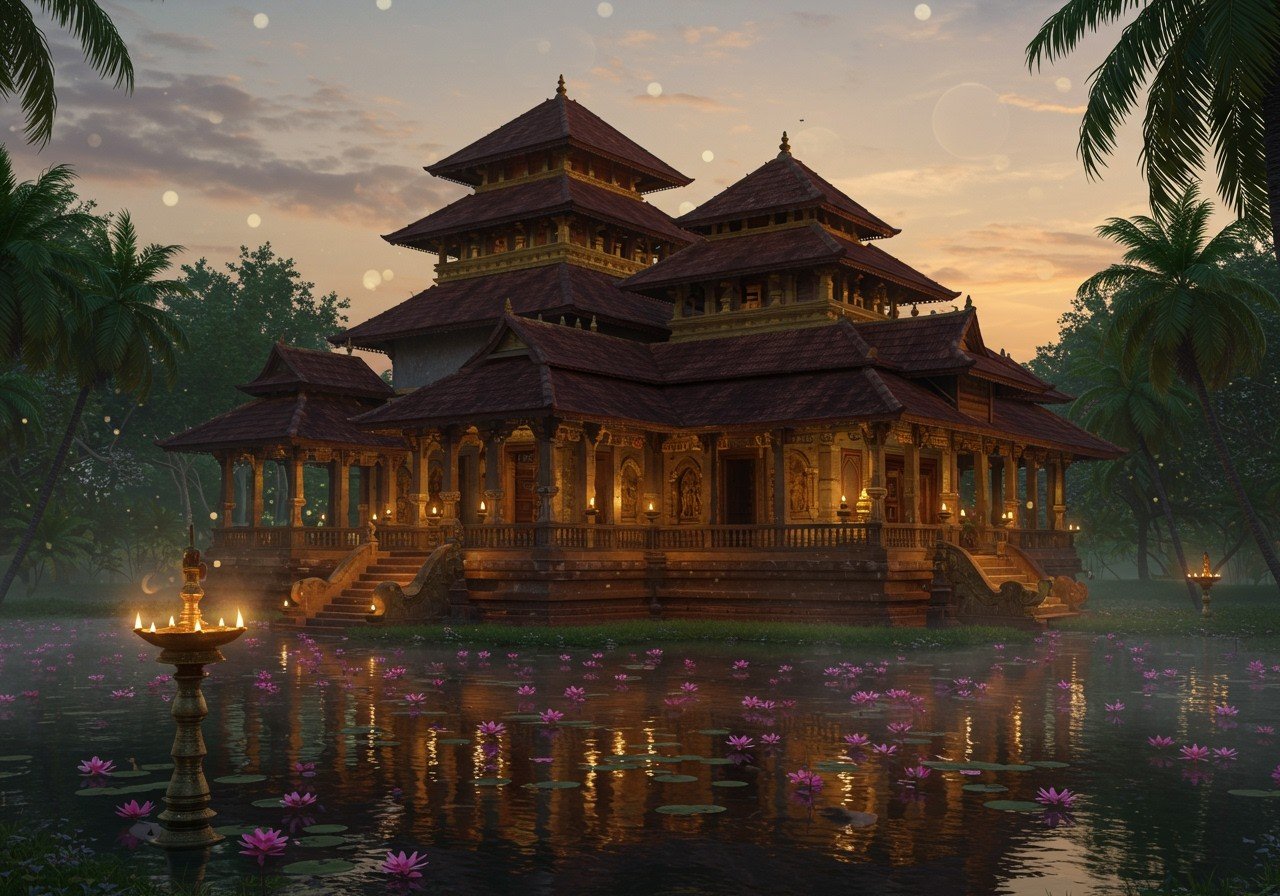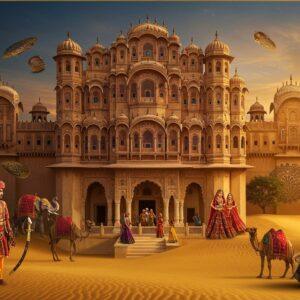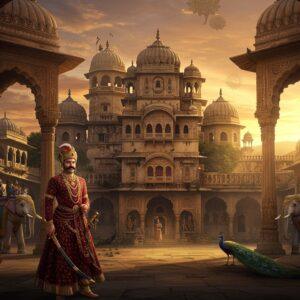
Nestled in the heart of Kerala, the Madhur Ganapati Temple stands as a testament to India’s rich spiritual heritage. Revered for its unique architecture and deep-rooted cultural significance, this sacred sanctuary beckons devotees and travelers alike to experience its divine aura. It’s a place where stories whisper through ancient stones, and the air hums with centuries of prayers and devotion.
A Journey Through Time: Unveiling the Temple’s History
The Madhur Ganapati Temple’s history is a tapestry woven with threads of legend and historical fact. Local folklore suggests its origins trace back to the 10th century CE, possibly making it one of the oldest Ganesha temples in the region. The exact date of its construction remains shrouded in the mists of time, adding to its mystique.
Initially, the temple was dedicated to Lord Shiva, known as Anantheswara. Legend has it that an elderly woman from the local Tulu Moger community stumbled upon a self-manifested Shiva linga, a divine symbol of Lord Shiva, marking the beginning of the temple’s sacred story.
A charming tale recounts how a child, engrossed in play, sketched an image of Lord Ganapati on the southern wall of the sanctum. Over time, this simple drawing miraculously grew larger, leading to a shift in the temple’s primary deity. Thus, Lord Ganapati, the remover of obstacles, became the central figure of worship, drawing devotees with his benevolent presence.
The temple’s history intertwines with the reigns of various rulers, including the Kumbla ruler, Jai Simha I, each leaving their mark on this sacred ground. A particularly intriguing anecdote involves Tipu Sultan. During his invasion, he intended to demolish the temple, but a sip of water from the temple’s well is said to have changed his mind. He left only a dagger mark, a silent witness to a dramatic shift in intention.
Architectural Splendor: A Symphony in Stone and Wood
The Madhur Ganapati Temple is a stunning example of Kerala’s traditional temple architecture, seamlessly blending Dravidian and Kerala styles. Its magnificent three-tiered dome commands attention. The top two tiers, gleaming with copper plate roofing, contrast beautifully with the tile roofing of the lower tier, creating a visual harmony that reflects the balance within.
A striking feature of the temple is its circular sanctum, a rarity in Kerala’s temple architecture, setting it apart as a unique gem among sacred sites. The temple’s interiors are adorned with intricately carved wooden pillars and beams, showcasing the artistry of bygone eras. The walls and roofs come alive with stucco images depicting scenes from Indian mythology, each a story waiting to be rediscovered.
The Namaskara Mandapam, a hall for prayers and offerings, is particularly noteworthy for its exquisite wood carvings illustrating scenes from the epic Ramayana. The temple’s overall architectural style, known as Gajaprishta, resembles the gentle curve of an elephant’s back, further adding to its distinctive character.
Within the temple compound lies a deep well, its water shielded from the sun’s rays, believed to possess curative properties. This well, steeped in local lore, adds another layer of mystique to the temple’s sacred atmosphere.
Artistic Expressions of Devotion: Where Faith Meets Art
The Madhur Ganapati Temple is not just a place of worship; it’s a living canvas of artistic expression. Every corner tells a story, every carving whispers a prayer. The detailed iconography of Hindu deities and myths, meticulously crafted by skilled artisans, transforms the temple walls into a visual narrative of faith and devotion. Intricate sculptures and frescoes, brought to life through techniques like relief work, adorn the temple, inviting contemplation and reverence.
These artistic features serve as more than mere decorations; they are expressions of deep-rooted cultural values and religious teachings, transforming the temple into a vibrant tapestry of spiritual and artistic significance.
The Heart of Community Life: Rituals, Festivals, and Traditions
The Madhur Ganapati Temple is not just a physical structure; it’s the beating heart of the local community. It’s a place where traditions are kept alive, rituals are performed with devotion, and festivals are celebrated with vibrant enthusiasm. Major festivals celebrated at the temple are important events in the community calendar, bringing people together in shared faith and celebration.
The temple also serves as a hub for cultural activities, echoing with the melodies of traditional music and the rhythmic movements of dance performances. Priestly lineages, guardians of ancient knowledge, play a vital role in preserving traditional practices and ensuring the continuity of spiritual traditions. This unbroken chain connects generations, enriching the regional cultural identity and reinforcing the temple’s role as a spiritual anchor.
A Pilgrim’s Guide: Experiencing the Divine at Madhur Temple
For those planning a visit, understanding the temple’s rituals and the best times to visit can enrich the experience. Respectful behavior, including adhering to dress codes, is essential temple etiquette. Guided tours offer valuable historical and cultural insights, adding depth to your exploration.
Nearby attractions and accommodation options allow for a comfortable and extended visit, enabling you to fully immerse yourself in the temple’s atmosphere and the surrounding area. Online resources provide convenient planning tools, allowing you to book guides in advance or purchase ritual items for a more fulfilling experience. For those seeking a deeper understanding, researching the temple’s unique features and significance beforehand can enhance your connection to this sacred place.
Poojn.in, India’s leading online store for puja samagri and other spiritual items can assist you in preparing for your visit. Browse our wide selection of puja items, including diyas, incense, and more, at https://www.poojn.in/product-category/pooja-samagri.
FAQs: Your Questions Answered
Is photography allowed inside the temple? While the exterior of the temple is often a popular subject for photography, it’s important to check with temple authorities regarding photography policies within the inner sanctum. Respecting the sanctity of the space is paramount.
What is the best time to visit Madhur Temple? The temple is open throughout the year, but visiting during festivals offers a unique opportunity to witness the vibrant celebrations and rituals. Early mornings and evenings are generally less crowded and provide a more peaceful atmosphere for contemplation and prayer. Check online or local resources for specific timings before your visit.
Embracing the Sacred Legacy: A Timeless Journey
The Madhur Ganapati Temple is more than just a destination; it’s a journey into the heart of India’s spiritual heritage. It’s a place where ancient stories come alive, where art and faith intertwine, and where the spirit of devotion resonates through the ages. Plan your visit, immerse yourself in the divine atmosphere, and experience the timeless beauty of this sacred sanctuary. Discover a connection to something larger than yourself, a connection to the rich tapestry of Indian spirituality and tradition.
Discover a wide range of puja items and spiritual products for your visit at Poojn.in. You can also find specific items like Radha Krishna Pariwar idols, Maa Manasha idols, and more to enhance your spiritual practice.


